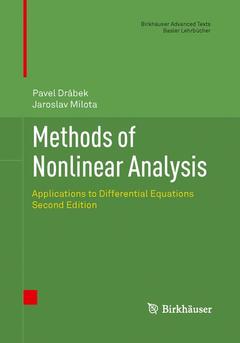Description
Methods of Nonlinear Analysis (2nd Ed., 2nd ed. 2013)
Applications to Differential Equations
Birkhäuser Advanced Texts Basler Lehrbücher Series
Authors: Drabek Pavel, Milota Jaroslav
Language: English
84.39 €
In Print (Delivery period: 15 days).
Add to cartPublication date: 06-2015
Support: Print on demand
Publication date: 01-2013
649 p. · 16.8x24 cm · Hardback
Description
/li>Contents
/li>Comment
/li>
In this book, fundamental methods of nonlinear analysis are introduced, discussed and illustrated in straightforward examples. Each method considered is motivated and explained in its general form, but presented in an abstract framework as comprehensively as possible. A large number of methods are applied to boundary value problems for both ordinary and partial differential equations. In this edition we have made minor revisions, added new material and organized the content slightly differently.
In particular, we included evolutionary equations and differential equations on manifolds. The applications to partial differential equations follow every abstract framework of the method in question.
The text is structured in two levels: a self-contained basic level and an advanced level - organized in appendices - for the more experienced reader. The last chapter contains more involved material and can be skipped by those new to the field. This book serves as both a textbook for graduate-level courses and a reference book for mathematicians, engineers and applied scientists




